Key Applications of Transformer Electrical Systems in Utility, Industry, and Infrastructure?
Are you wondering how transformers fit into the bigger picture of our modern electrical world? From powering cities to enabling cutting-edge technologies, transformers play a crucial role. But how exactly are they used across different sectors, and why does it matter to you?
Transformer electrical systems are essential in utilities, industrial plants, and infrastructure projects. They enable voltage conversion, ensure stable power distribution, and support operations in power grids, factories, buildings, and renewable energy systems. Each application demands specific transformer types for performance, safety, and efficiency.
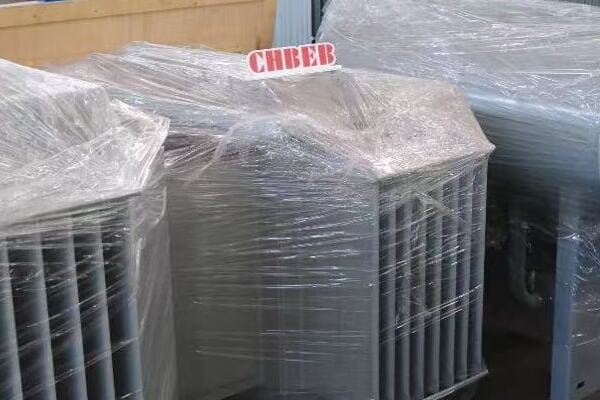
In this comprehensive guide, I’ll walk you through the key applications of transformer systems across utility, industrial, and infrastructure sectors. Whether you’re an engineer, project manager, or simply curious about how our electrical world works, this article will provide valuable insights into the diverse roles of transformers in modern society.
Utility Sector Applications – Power Generation, Transmission, and Distribution?
Have you ever wondered how electricity travels from power plants to your home? Transformers are the unsung heroes of this journey. But what specific roles do they play in the utility sector, and why are they so crucial for keeping our lights on?
In the utility sector, transformers are vital for power generation, transmission, and distribution. They include step-up transformers at power plants, large oil-immersed units in grid-level substations, and distribution transformers in neighborhoods. These systems enable efficient power transfer across vast distances and voltage levels.
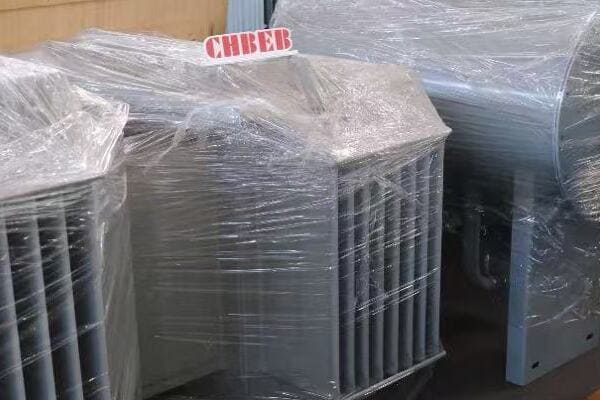
Key Transformer Applications in Utilities
Let’s explore the critical roles of transformers in the utility sector:
- Step-up transformers at power plants
- Grid-level substations with oil-immersed transformers
- Distribution transformers (pole/pad-mounted)
- Smart grid & monitoring integration
Step-Up Transformers at Power Plants
These transformers play a crucial role right at the source:
- Increase voltage from generators (typically 15-25kV) to transmission levels (100kV+)
- Enable efficient long-distance power transmission
- Often large, oil-filled units with specialized cooling systems
I once visited a hydroelectric plant where the step-up transformer was as large as a house. It was fascinating to see how this massive unit could efficiently boost the voltage for transmission across hundreds of miles.
Grid-Level Substations
Substations are the nodes of our power grid:
- Use large oil-immersed transformers to step down voltage for regional distribution
- Typically handle voltages from 500kV or 230kV down to 69kV or 34.5kV
- Incorporate advanced monitoring and protection systems
In a recent project, we upgraded a substation with smart transformers that could communicate real-time data to the utility’s control center. This enhancement significantly improved grid reliability and response times to potential issues.
Distribution Transformers
These are the transformers you might see in your neighborhood:
- Further step down voltage for end-user consumption (typically to 400V/230V)
- Come in pole-mounted or pad-mounted configurations
- Designed for reliability and minimal maintenance
Smart Grid Integration
Modern utility transformers are becoming smarter:
- Incorporate sensors for real-time monitoring
- Enable dynamic load management and fault detection
- Support integration of renewable energy sources
Here’s a quick overview of transformer types in the utility sector:
| Location | Transformer Type | Typical Voltage Transformation |
|---|---|---|
| Power Plant | Step-Up | 20kV to 400kV |
| Transmission Substation | Step-Down | 400kV to 110kV |
| Distribution Substation | Step-Down | 110kV to 11kV |
| Local Distribution | Pole/Pad-Mounted | 11kV to 400V/230V |
The utility sector relies heavily on transformers to maintain a stable and efficient power grid. From massive units at power plants to the smaller transformers in your neighborhood, each plays a vital role in ensuring reliable electricity delivery. As we move towards smarter grids and integrate more renewable energy sources, the role of transformers in the utility sector continues to evolve, incorporating new technologies for better monitoring, efficiency, and grid stability.
Industrial Applications – Supporting Heavy Machinery and Processes?
Have you ever wondered how large factories and industrial complexes manage their enormous power needs? Transformers play a critical role in industrial settings, but how exactly do they support the diverse and demanding requirements of heavy machinery and complex processes?
In industrial applications, transformers are essential for powering heavy machinery and supporting complex manufacturing processes. They provide step-down conversion for 480V/400V motors, offer isolation for sensitive control systems, and handle harmonic filtering in variable frequency drive setups. These transformers are crucial in steel plants, cement factories, and oil & gas facilities.
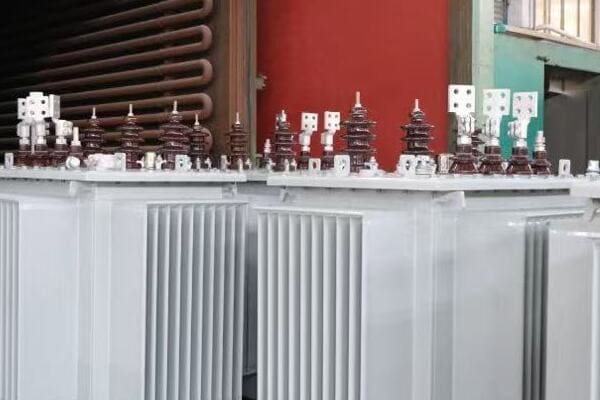
Key Transformer Applications in Industry
Let’s explore the critical roles of transformers in industrial settings:
- Step-down units for 480V/400V motors
- Isolation transformers for sensitive control systems
- Harmonic filtering in variable frequency drive (VFD) setups
- Used in steel plants, cement, oil & gas facilities
Step-Down Transformers for Industrial Motors
These transformers are the workhorses of industrial power distribution:
- Convert incoming medium voltage (e.g., 11kV, 33kV) to usable levels for machinery (typically 480V or 400V)
- Handle high loads and frequent starts/stops of large motors
- Often designed for harsh environments with dust, heat, and vibration
I once worked on a project for a large steel mill where we installed a series of robust dry-type transformers. These units had to withstand extreme heat and dust while providing reliable power to massive rolling mill motors. The choice of high-temperature insulation and reinforced mechanical design was crucial for their longevity in this challenging environment.
Isolation Transformers for Control Systems
Protecting sensitive equipment is vital in industrial settings:
- Provide electrical isolation between power source and control systems
- Reduce noise and transients that can affect precision equipment
- Critical in industries with sensitive measurement and control processes
In a recent automation upgrade for a pharmaceutical plant, we implemented isolation transformers to protect the new control systems. This significantly reduced electromagnetic interference issues and improved the reliability of their precision manufacturing processes.
Harmonic Mitigation in VFD Applications
Variable Frequency Drives (VFDs) are common in modern industrial settings:
- Special transformers help mitigate harmonics generated by VFDs
- K-factor rated transformers designed to handle non-linear loads
- Improve overall power quality and reduce stress on the electrical system
Industry-Specific Applications
Different industries have unique transformer requirements:
-
Steel Plants:
- High-capacity transformers for electric arc furnaces
- Specialized units for induction heating processes
-
Cement Factories:
- Dust-resistant transformers for grinding mills
- Reliable units for 24/7 operation
-
Oil & Gas Facilities:
- Explosion-proof transformers for hazardous areas
- Corrosion-resistant designs for offshore platforms
Here’s a comparison of transformer applications in different industrial settings:
| Industry | Common Transformer Type | Key Features |
|---|---|---|
| Steel Manufacturing | Oil-immersed, high capacity | Heat resistant, high inrush current capability |
| Chemical Processing | Dry-type, epoxy encapsulated | Corrosion resistant, environmentally sealed |
| Automotive Assembly | Cast resin, multiple secondary | Flexible voltage outputs, compact design |
| Mining | Pad-mounted, ruggedized | Dust and vibration resistant, portable options |
Challenges in Industrial Transformer Applications
Industrial environments pose unique challenges:
- Harsh conditions (heat, dust, chemicals)
- High reliability requirements (24/7 operation)
- Energy efficiency concerns
- Space constraints in existing facilities
In my experience, successful industrial transformer installations require a deep understanding of the specific process requirements and environmental conditions. For instance, in a recent project for an aluminum smelter, we had to custom-design transformers that could handle both the high ambient temperatures and the corrosive atmosphere. This involved selecting special materials for windings and using advanced cooling systems.
Industrial transformers are the backbone of manufacturing and processing operations. They must be robust, reliable, and often customized to meet specific industry needs. As industries evolve towards more automated and energy-efficient processes, the role of transformers is becoming even more critical. From providing clean power for sensitive controls to handling the demands of heavy machinery, these transformers are essential in keeping our industrial world running smoothly and efficiently.
Commercial Infrastructure – Office Buildings, Hospitals, Data Centers?
Have you ever considered what keeps the lights on and computers running in large office buildings, hospitals, or data centers? Transformers play a crucial but often unseen role in these commercial infrastructures. But what makes these applications unique, and why do they require special consideration?
In commercial infrastructure, transformers are vital for powering office buildings, hospitals, and data centers. They typically use dry-type transformers in indoor electrical rooms, compact substations in commercial compounds, and fire-safe F1-rated units in critical facilities. Noise reduction and energy efficiency are key factors, especially in LEED-certified buildings.

Key Transformer Applications in Commercial Infrastructure
Let’s explore the critical roles of transformers in commercial settings:
- Dry-type transformers in indoor electrical rooms
- Compact substations in commercial compounds
- Fire-safe F1-rated transformers in hospitals, airports
- Noise and energy efficiency important for LEED buildings
Dry-Type Transformers in Office Buildings
These are the most common type in commercial settings:
- Typically step down voltage from 11kV/6.6kV to 400V/230V
- Located in dedicated electrical rooms
- Chosen for their fire safety and low maintenance needs
I once worked on a retrofit project for a high-rise office building in a busy urban center. We replaced old oil-filled units with modern dry-type transformers. This not only improved safety but also freed up valuable space due to their compact design and reduced fire risk.
Compact Substations for Commercial Complexes
Large commercial areas often require their own substations:
- Integrate transformer, switchgear, and low-voltage distribution
- Prefabricated units for faster installation and smaller footprint
- Crucial for shopping malls, business parks, and educational campuses
In a recent project for a new university campus, we implemented compact substations across the site. This approach significantly reduced construction time and provided a flexible power distribution solution that could easily adapt to the campus’s evolving needs.
Fire-Safe Transformers in Critical Facilities
Hospitals and airports have stringent safety requirements:
- F1-rated transformers with minimal fire risk
- Often combined with K-factor ratings for non-linear loads (medical equipment, IT systems)
- Reliability is paramount to support life-critical systems
During a hospital expansion project, we specified F1-rated cast resin transformers with a K-13 rating. This ensured both fire safety and the ability to handle the harmonic-rich loads from modern medical imaging equipment.
Energy Efficiency and LEED Certification
Modern commercial buildings often aim for LEED certification:
- High-efficiency transformers contribute to energy savings
- Low-noise units are crucial for occupant comfort
- Amorphous core transformers gaining popularity for their low losses
Here’s a comparison of transformer applications in different commercial settings:
| Setting | Common Transformer Type | Key Considerations |
|---|---|---|
| Office Building | Dry-type, low noise | Space-saving, fire safety |
| Hospital | Cast resin, F1-rated | Reliability, EMI shielding |
| Data Center | Liquid-filled, high efficiency | Cooling, overload capacity |
| Shopping Mall | Compact substation | Flexibility, aesthetic integration |
Challenges in Commercial Infrastructure Applications
Commercial settings present unique challenges:
- Space constraints in urban buildings
- Strict fire and safety regulations
- Need for quiet operation
- Growing demand for energy efficiency
- Integration with building management systems
In my experience, successful transformer installations in commercial infrastructure require a holistic approach. For instance, in a recent data center project, we had to balance the need for high-capacity power delivery with strict efficiency and reliability requirements. This led us to choose a hybrid solution combining high-efficiency liquid-filled transformers for the main power and smaller dry-type units for critical backup systems.
Transformers in commercial infrastructure play a crucial role in ensuring safe, reliable, and efficient power distribution. As buildings become smarter and more energy-conscious, the demands on these transformers are evolving. From supporting green building initiatives to ensuring uninterrupted power in critical facilities, these transformers are at the heart of modern commercial operations. The key is to select and implement transformer solutions that not only meet current needs but can also adapt to the changing landscape of commercial power requirements.
Transportation and Smart Infrastructure – Railways, Airports, EV Charging?
Have you ever wondered what powers our increasingly electrified transportation systems? From high-speed railways to electric vehicle charging stations, transformers play a vital role in keeping our modern transportation infrastructure running smoothly. But what makes these applications unique, and how are transformers adapting to these evolving needs?
In transportation and smart infrastructure, transformers are crucial for powering railways, airports, and EV charging networks. They include specialized traction transformers for rail systems, medium-voltage units for airport operations, and dedicated transformers for EV fast-charging stations. These applications demand high reliability, efficiency, and often compact designs to fit within space-constrained environments.
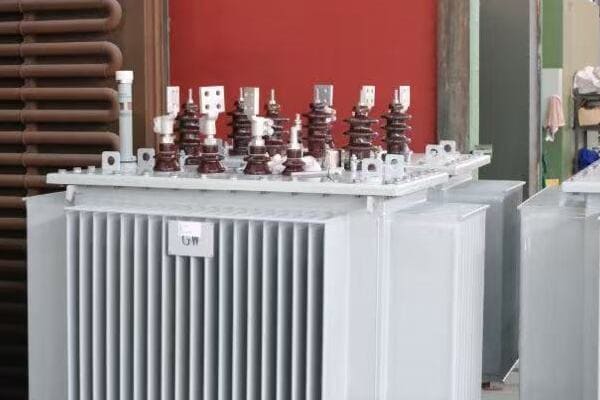
Key Transformer Applications in Transportation and Smart Infrastructure
Let’s explore the critical roles of transformers in these modern applications:
- Traction transformers in rail networks
- Medium-voltage units in airport lighting systems
- Transformers for EV fast-charging stations
- Support systems in tunnels and metro lines
Traction Transformers for Railways
These specialized transformers are the backbone of electric rail systems:
- Convert high-voltage AC from the grid to suitable voltage for train motors
- Designed for high reliability and efficiency under variable loads
- Must withstand severe mechanical stresses and environmental conditions
I once worked on a high-speed rail project where the traction transformers had to be custom-designed to fit within the limited space of the train cars while handling the extreme loads and vibrations of high-speed travel. The compact, lightweight design was crucial for the project’s success.
Airport Infrastructure Transformers
Airports require a complex network of power distribution:
- Medium-voltage transformers for runway lighting systems
- Reliable power for navigation and communication equipment
- Special considerations for harsh weather conditions and 24/7 operation
In a recent airport expansion project, we implemented a network of smart transformers that could communicate with the central control system. This allowed for real-time monitoring of power quality and predictive maintenance, crucial for maintaining uninterrupted airport operations.
EV Charging Infrastructure
The rapid growth of electric vehicles is driving new transformer applications:
- Compact, high-power transformers for fast-charging stations
- Often integrated with power electronics for DC fast charging
- Need to handle variable loads and frequent power cycling
We recently designed a transformer solution for a large-scale EV charging hub. The challenge was to provide high-power charging capability while managing the grid impact of multiple vehicles charging simultaneously. We implemented a smart transformer system that could dynamically adjust to charging demands and communicate with the grid for optimal load management.
Metro and Tunnel Systems
Underground transportation systems have unique power needs:
- Compact substations for space-constrained environments
- Fire-safe designs crucial for underground installations
- Integration with emergency power systems
Here’s a comparison of transformer applications in different transportation settings:
| Application | Transformer Type | Key Features |
|---|---|---|
| High-Speed Rail | Traction transformer | Compact, high-power density, vibration resistant |
| Airport | Pad-mounted, medium voltage | Weather-resistant, reliable for critical systems |
| EV Charging Station | Dry-type, integrated | Fast response, smart grid compatible |
| Metro System | Cast resin, fire-rated | Compact, low noise, high safety standards |
Challenges in Transportation and Smart Infrastructure
These applications present unique challenges:
- Space constraints, especially in urban and underground settings
- High reliability requirements for safety-critical systems
- Need for energy efficiency to reduce operational costs
- Integration with smart grid and monitoring systems
- Adaptability to rapidly evolving technologies (especially in EV charging)
In my experience, successful transformer implementations in transportation and smart infrastructure require a forward-thinking approach. For instance, in a recent smart city project, we had to design a flexible transformer network that could adapt to the changing needs of EV charging, public transportation, and smart grid integration. This involved using modular designs and incorporating advanced monitoring and control systems.
Transformers in transportation and smart infrastructure are at the forefront of our transition to more electrified and connected systems. From powering the trains we ride to enabling the charging networks for our electric vehicles, these transformers are essential components of our modern world. As we continue to develop smarter, more efficient transportation systems, the role of transformers will only grow in importance, demanding ongoing innovation in their design and application.
Renewable Energy Systems – Solar, Wind, and Storage Integration?
Are you curious about how renewable energy sources like solar and wind connect to our power grid? Transformers play a crucial role in making renewable energy viable and efficient. But what specific challenges do these green energy sources present, and how are transformers adapting to meet these unique needs?
In renewable energy systems, transformers are essential for integrating solar farms, wind turbines, and energy storage solutions with the power grid. They include step-up transformers for solar and wind farms, inverter-duty transformers for converting DC to AC, and specialized units for battery energy storage systems. These transformers must handle variable loads, bidirectional power flow, and often harsh environmental conditions.

Key Transformer Applications in Renewable Energy
Let’s explore the critical roles of transformers in renewable energy systems:
- Step-up transformers for solar/wind farms
- Inverter duty transformers
- Integration with battery energy storage systems (BESS)
- Offshore wind farm high-voltage transformers
Step-Up Transformers for Solar and Wind Farms
These transformers are crucial for connecting renewable sources to the grid:
- Increase voltage from generation level (typically 600V-1000V) to transmission levels
- Must handle variable power input due to changing weather conditions
- Often located in remote or harsh environments
I once worked on a large solar farm project in a desert region. The transformers had to be specially designed to withstand extreme heat and sand while efficiently handling the variable output of the solar panels. We implemented advanced cooling systems and protective enclosures to ensure reliability in these challenging conditions.
Inverter Duty Transformers
These specialized transformers work closely with power inverters:
- Convert DC power from solar panels or wind turbines to AC for grid use
- Must handle high harmonic content and frequent load changes
- Often compact designs for integration with inverter systems
In a recent wind farm project, we used custom-designed inverter duty transformers that could handle the variable frequency output of the wind turbines. These transformers were crucial in maintaining power quality and efficiency as the wind speeds fluctuated.
Integration with Battery Energy Storage Systems
Energy storage is becoming increasingly important in renewable systems:
- Transformers must handle bidirectional power flow (charging and discharging)
- Often combined with smart control systems for grid stabilization
- Require fast response to sudden load changes
We recently implemented a large-scale battery storage system for a hybrid solar-wind plant. The transformer system was designed to seamlessly switch between charging the batteries during excess production and supplying power to the grid during peak demand periods.
Offshore Wind Farm Transformers
Offshore wind presents unique challenges:
- Must withstand harsh marine environments (salt spray, high humidity)
- Compact designs to fit within offshore platforms or turbine towers
- High reliability crucial due to difficult access for maintenance
Here’s a comparison of transformer applications in different renewable energy settings:
| Application | Transformer Type | Key Features |
|---|---|---|
| Solar Farm | Step-up, oil-filled | High efficiency, withstand temperature extremes |
| Wind Turbine | Dry-type, compact | Vibration resistant, often integrated in nacelle |
| Battery Storage | Bidirectional, smart | Fast response, harmonics management |
| Offshore Wind | Sealed, corrosion-resistant | Compact, high reliability in marine environment |
Challenges in Renewable Energy Applications
Renewable energy transformers face unique challenges:
- Handling variable and intermittent power generation
- Ensuring grid stability with fluctuating inputs
- Operating in remote or harsh environments
- Meeting strict efficiency standards to maximize energy yield
- Adapting to rapidly evolving renewable technologies
In my experience, successful transformer implementations in renewable energy require a deep understanding of both the energy source and grid requirements. For instance, in a hybrid renewable project combining solar, wind, and battery storage, we had to design a flexible transformer system that could efficiently manage the diverse inputs while providing stable output to the grid. This involved advanced monitoring systems and smart controls to optimize power flow and maintain grid stability.
Transformers in renewable energy systems are at the forefront of our transition to a cleaner, more sustainable energy future. They play a critical role in making renewable sources viable and integrating them seamlessly with our existing power infrastructure. As renewable technologies continue to advance and their adoption grows, the demands on these transformers will evolve, driving ongoing innovation in their design and capabilities.
Application Summary Table – Use Case vs Transformer Type
Are you looking for a quick reference guide to match transformer types with specific applications? Understanding which transformer is best suited for different use cases can be challenging, but it’s crucial for efficient and safe power distribution. Let’s break it down in a clear, easy-to-understand format.
This summary table provides a comprehensive overview of transformer types matched to various applications across utility, industrial, commercial, and renewable energy sectors. It highlights key considerations for each use case, helping engineers and project managers make informed decisions in transformer selection.
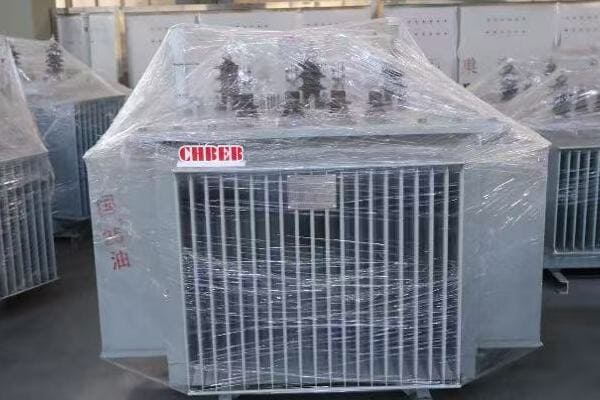
Comprehensive Application vs Transformer Type Table
Here’s a detailed breakdown of transformer applications and their corresponding transformer types:
| Application Area | Common Transformer Type | Key Considerations |
|---|---|---|
| Utility Grid | Oil-immersed, ONAN | High voltage, IEC/ANSI standards compliance |
| Factory | Dry-type, VPI | Indoor use, reliable under variable loads |
| Data Center | Cast resin | Fire-safe, silent operation, high efficiency |
| EV Charging | Pad-mounted | Compact, 11kV–400V step-down, smart grid ready |
| Solar Farm | Step-up, inverter-duty | Grid compliance, harmonic mitigation |
| Wind Turbine | Dry-type, compact | Vibration resistant, often nacelle-integrated |
| Hospital | Cast resin, F1-rated | Ultra-reliable, low EMI emission |
| Office Building | Dry-type, low noise | Space-saving design, energy efficient |
| Railway | Traction transformer | High power density, shock resistant |
| Battery Storage | Bi-directional | Fast response, smart controls integration |
Utility Grid Applications
Transformers in the utility sector face unique demands:
- Must handle very high voltages and power capacities
- Require excellent cooling for continuous operation
- Need to comply with strict utility standards (IEC, ANSI)
In my experience working with utility-scale projects, the reliability and longevity of these transformers are paramount. I recall a project where we implemented advanced online monitoring systems in large substation transformers, significantly improving maintenance efficiency and reducing downtime.
Industrial and Manufacturing
Factories and industrial settings require robust transformer solutions:
- Ability to handle non-linear loads and harmonics
- Often need to be compact for space-constrained environments
- Must be reliable under harsh conditions (heat, dust, vibrations)
I once worked on upgrading the power system for a large automotive plant. We chose VPI (Vacuum Pressure Impregnated) dry-type transformers for their excellent performance in dusty environments and ability to handle the variable loads of robotic assembly lines.
Commercial and Data Centers
Modern commercial buildings and data centers have specific needs:
- Fire safety is often the top priority
- Low noise operation for occupied spaces
- High efficiency to reduce operational costs and meet green building standards
In a recent data center project, we opted for cast resin transformers due to their excellent fire safety ratings and low noise characteristics. This choice was crucial in meeting the stringent safety requirements while ensuring minimal disruption to the sensitive IT equipment.
Renewable Energy Systems
Transformers for renewable energy face unique challenges:
- Must handle variable inputs from solar or wind sources
- Often exposed to harsh environmental conditions
- Need to integrate with smart grid technologies
During the development of a large offshore wind farm, we designed custom transformers that could withstand the corrosive sea environment while efficiently handling the variable power output of the wind turbines. This required innovative sealing techniques and advanced monitoring systems.
Transportation and EV Infrastructure
The growing electric vehicle market demands specialized transformer solutions:
- Compact designs for urban charging stations
- Ability to handle frequent load changes
- Integration with smart charging management systems
In a recent project for a city-wide EV charging network, we implemented smart pad-mounted transformers that could communicate with the charging stations to optimize power distribution and manage peak loads effectively.
This summary table and the accompanying insights serve as a valuable reference for anyone involved in electrical system design or project management. By understanding the specific requirements of each application and matching them with the appropriate transformer type, you can ensure optimal performance, safety, and efficiency in your power distribution systems. Remember, while this guide provides a general overview, each project may have unique requirements that necessitate consultation with transformer experts for the best results.
Conclusion
Transformers play crucial roles across various sectors, from utility power distribution to renewable energy integration. Understanding the specific needs of each application is key to selecting the right transformer type, ensuring efficient, safe, and reliable power systems in our increasingly electrified world.
Remember, at chbeb-ele, we’re not just sharing information – we’re empowering you to be part of the solution in creating a secure, clean, and efficient energy future. Let’s continue this journey together.
Recent Post
Quick Message
Request A free quote
We'd like to work with you
- +86 15558785111
- chbebgroup@chbebpower.com
- +86 15558785111
What We Do
CHINA BEI ER BIAN (CHBEB) GROUP, with 218 million in registered capital, originated from Beijing Beierbian Transformer Group. Headquartered in Beijing for R&D, it operates major production bases in Nanjing and Yueqing, producing high-quality products.
Latest Post
Latest Product
Contact Us
- +86 15558785111
- chbebgroup@chbebpower.com
- +86 15558785111
BeiJing
No 3,RongJing East Road,BeiJing Economic Technological Development Area,BeiJing,China
JiangSu
No 7️Xiangfeng Road,Jiangning,NanJing,JiangSu,China
WenZhou
No.211, Wei 16 Road, Industrial Zone, Yueqing, Wenzhou, Zhejiang, China.
XiangYang Industrial Zone ,YueQing,WenZhou,ZheJiang,China

